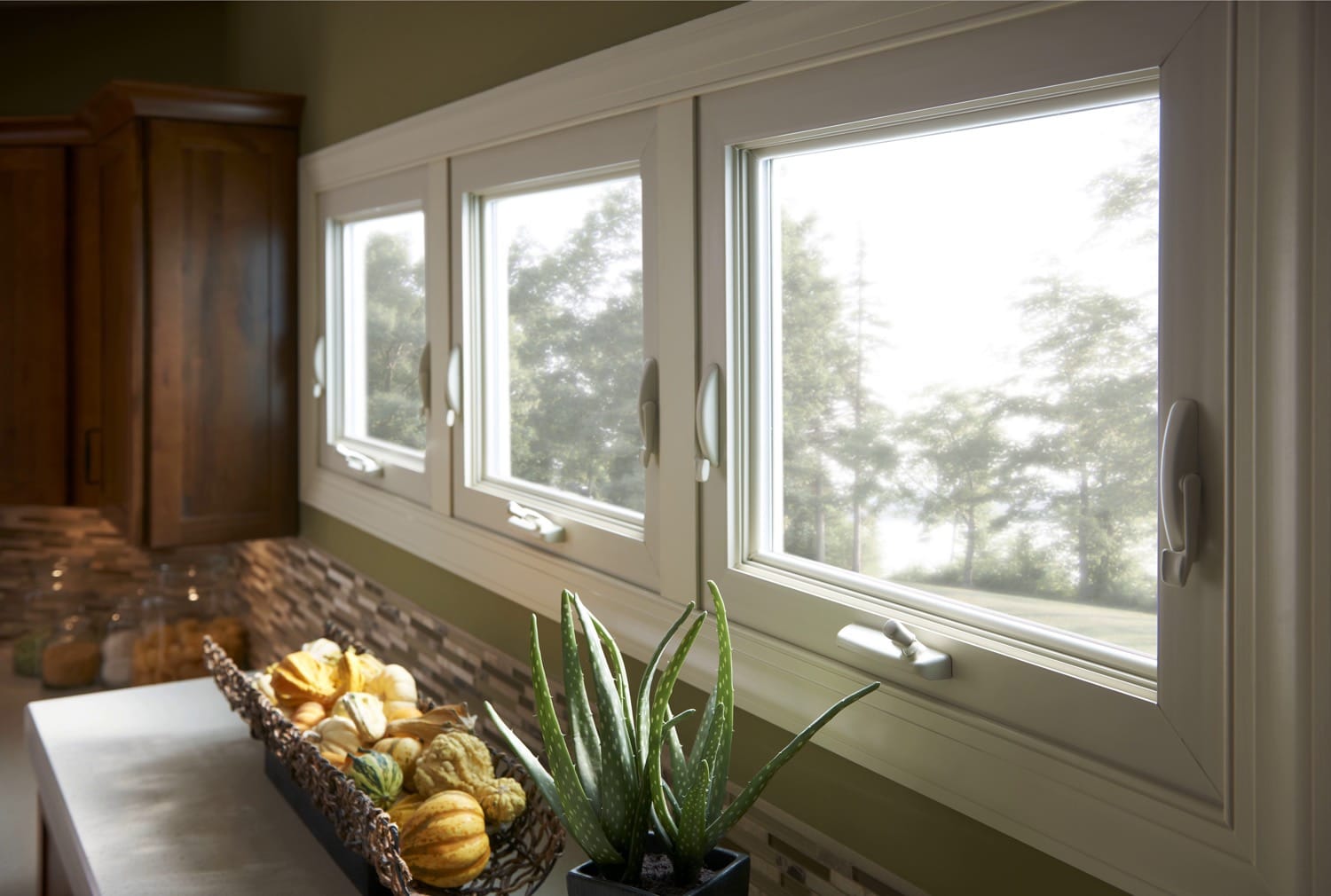In a previous blog post we discussed casement windows and how they’re often overlooked by homeowners. Awning windows are similar to casement windows in function as they both operate on hinges as opposed to sliding. The major difference lies in casement windows opening from the side and awning windows opening from hinges mounted on the top.
Awning windows are most commonly found in the basement. They’re weather-tight and allow for excellent ventilation when opened. If choosing awning windows for the basement, try to avoid wooden windows as the material expands and shrinks with weather. This allows for air to escape and outside weather like rain seep in through the frame.
There are a few disadvantages to awning windows but it should not deter you from considering them. Most of the disadvantages don’t apply to every home as the architecture may drastically differ. One disadvantage of awning windows includes frequent maintenance and washing. The sashes on awning windows are exposed and open outwards from the house meaning they’re subject to the outside elements and debris. In the case of an emergency, awning windows are not optimal for escape. The screens are mounted inside which means they’d have to be removed before exiting through the window.
Depending on the placement of awning windows, the advantages can far outweigh the disadvantages. Awning windows provide excellent ventilation and natural light when placed high on a wall. Their weather-tight seal is optimal in protecting against moisture and rainstorms.
Just like any other window type, awning windows have advantages and disadvantages. They’re often used in basements to let in natural light and keep moisture out. Pella, Marvin, Thermal and Polaris all cary awning windows which can be found on Rusco’s website.

